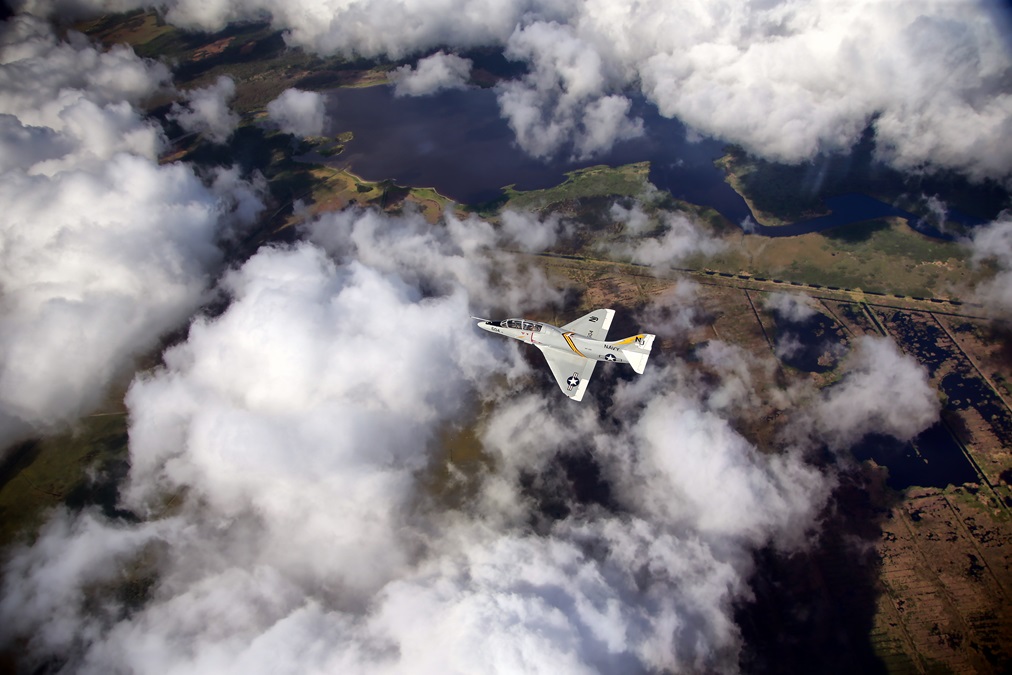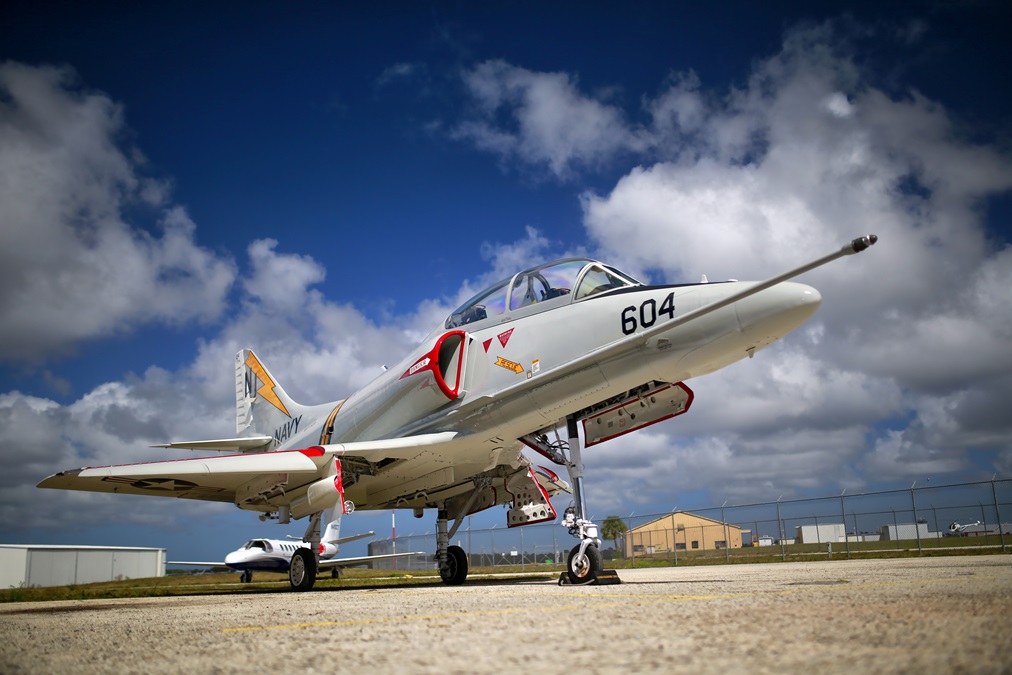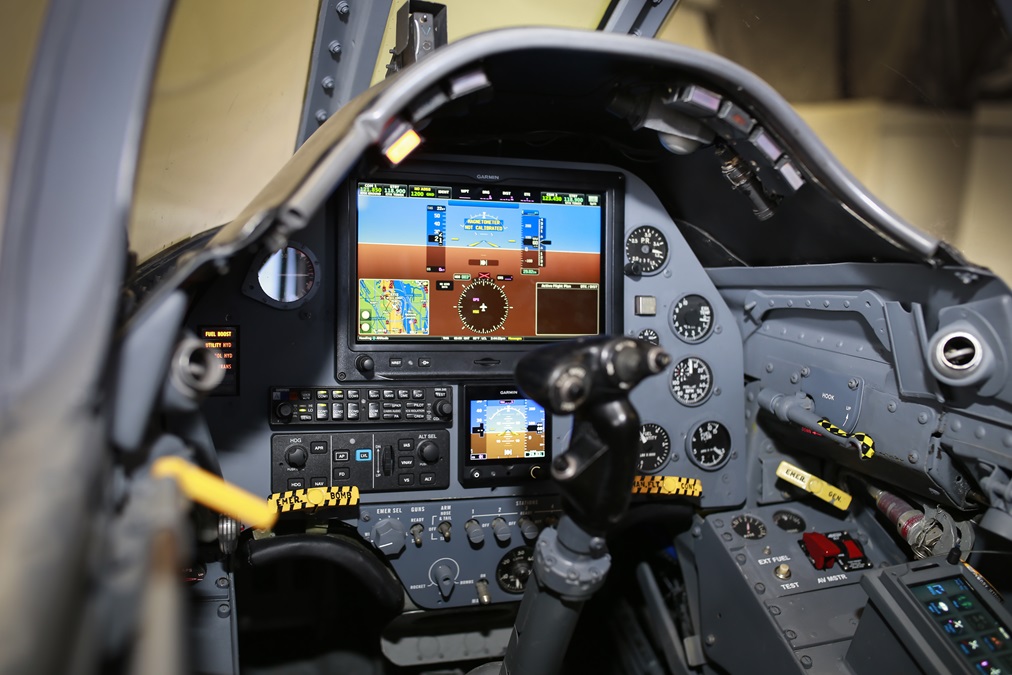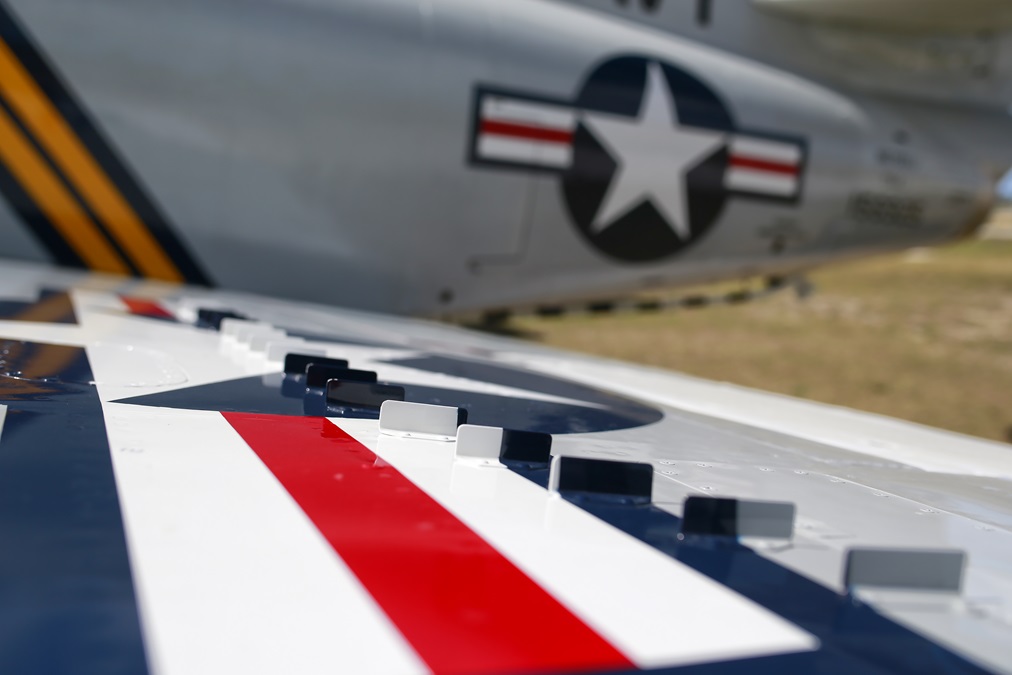A scooter for today
Restoring a Douglas A-4
During nearly a half-century of U.S. service, the elegantly simple, no-frills “Scooter” proved itself again and again in roles as varied as actress Meryl Streep.
So when Alan “Big Al” Armstrong, a former naval flight officer and accomplished general aviation pilot, came upon a forlorn TA–4 that a U.S. government contractor wanted to sell, it got his full attention. The airplane was in the midst of a seemingly endless 10-year restoration, and it fit the aircraft restorer’s truism of being “90-percent done with 90-percent to go.”
“I made what I thought was a preposterously low offer,” Armstrong said, “and they accepted. I was stunned. I really wasn’t sure what to do next, other than call Doug.”
Doug Matthews, a fellow Navy veteran, owns Classic Fighters of America, a Titusville, Florida, firm that specializes in ground-up warbird restorations. Matthews owns and flies a T–33 Shooting Star and his company is working on an F–86 Sabre jet reinvention. The two teamed up to bring the TA–4 back to top mechanical condition, made it modern with the latest glass avionics, and added a gleaming and historically accurate paint scheme.
Their airframe had logged about 8,000 total flight hours—and it was particularly desirable because it had made just 89 carrier landings. Those violent events are hard on equipment, even when everything goes right.
Armstrong and Matthews approached this warbird restoration with the same high standards and attention to detail applied to piston fighters such as P–51 Mustangs and F4U Corsairs that have surged in value over the past 20 years. But they knew the same economic “logic” might not apply to their TA–4. “We don’t use the L-word very much because most warbird restorations defy logic,” Matthews said. “We did this because we just couldn’t pass up the opportunity. We really wanted to take it on.”
Armstrong and Matthews sent a crew of four technicians to Wichita for a month to get the TA–4 ready to fly. Then they ferried it to Titusville and took it apart. It became clear then that their restoration would require more than simply cleaning up and painting the historic jet.
They removed hundreds of pounds of mechanical instruments, gauges, relays, and wiring, and its antiquated oxygen system. They updated the cockpits with a pair of Garmin G3X screens that have moving maps, ADS-B, and GPS-derived synthetic vision. A Garmin GTN 650 provides WAAS GPS as well as nav and com. A diminutive Garmin G5 serves as an all-in-one standby instrument, and it’s even got an autopilot. Like other warbirds, the TA–4 is registered in the Experimental-Exhibition category.
“The restoration was a slippery slope,” Armstrong said. “We saw things we wanted to improve, and then we just got deeper and deeper into it. By the time we had taken everything apart, we were basically starting from scratch.”
In retrospect, he said, their lowball offer may have been overly generous. But flying the restored airplane has been rewarding. “Strapping into it and going flying, well, the airplane becomes an extension of you,” he said. “It’s incredibly satisfying.”
Up and away
The Scooter is an airplane of odd proportions. Its cartoonish giraffe legs were designed to allow it to carry underwing tanks, bombs (including nukes), and rockets, so it stands tall. Its diminutive wings (just 27 feet in span) have leading-edge slats that claw the air at higher angles of attack.
Semicircular jet intakes direct air to the single Pratt & Whitney J52-8 engine, which spits out 9,300 pounds of thrust. The ramp weight of this airplane is 10,700 pounds—so it has an exceptional thrust-to-weight ratio. (The TA–4 has a maximum gross weight of 24,500 pounds, so this one is feather light.)
A tall external ladder is necessary to climb in, and the cockpit is so narrow that broad-shouldered pilots must twist sideways when the canopy closes.
Armstrong is pilot in command in the front cockpit, and I’m attached to the ejection seat in the rear by a corset-like torso harness. Cockpit organization is essential since there’s no real storage space, and the cockpit isn’t wide enough to open an aeronautical chart. Everything, including normal and emergency checklists, must fit on a kneeboard.
The TA–4 has no internal battery, so it requires a power cart and ground crew to get the engine started. The engine lights with a screaming whine, and even at idle power Armstrong stands on the brakes to keep the airplane from rolling forward. We’re carrying about 650 gallons of jet fuel, enough for about two hours at the relatively low altitudes below 12,000 feet where we’ll be flying.
We taxi to Runway 36 at Space Coast Regional Airport (TIX) and takeoff acceleration is brisk, long lasting, and exhilarating. Armstrong rotates at 135 knots and the main wheels come off the ground at 145. The landing gear is fully retracted as we accelerate through 225 knots at pattern altitude and begin a climbing right turn to the south.
“This thing is a rocket ship,” Armstrong says as he throttles back in a 15-degree nose-up attitude. “It would be easy to blow through 250 knots in the climb, or 18,000 feet when you’re maneuvering.”
For such an agile airplane, the Scooter isn’t at all twitchy. The nose stays where you point it, and changing airspeeds require minimal pitch trim adjustments.
Armstrong performs a series of rolls with increasing aileron deflection. Half deflection results in a roll rate of about 360 degrees per second. (Full aileron deflection at cruise speed results in a blinding 760 degrees per second, according to the manual—which is even faster than an F–16.)
We slow down to fly alongside the photo airplane, then return to Space Coast Regional as a flight of two for an overhead approach. Armstrong works hard at keeping the airspeed below 250 KIAS as we fly an overhead pattern. “Ideally, we’d be going at least 100 knots faster than this in the break,” he says.
With landing gear and flaps down, the additional drag requires about 85 percent rpm to maintain the desired 125-knot approach speed on final. Armstrong holds a constant angle of attack and modulates the throttle to make glideslope adjustments.
The spring-loaded leading-edge slats deployed on their own, and their movement was so smooth I didn’t even notice them. (The Blue Angels used to secure them in the up position to keep them from shifting during their close formation flights.)
At about 50 feet agl, Armstrong adds engine power to cushion the touchdown. The long stroke of the main landing gear soaks up any bounce, and he applies full forward stick to put weight on the nosewheel and keep it from shimmying. We use about 6,000 feet of runway with light braking, then taxi back to the Classic Fighters ramp. The flight has gone well, and Armstrong is pumped.
“I won’t lie,” he said. “This is pretty freakin’ cool.”
But there’s one final error Scooter pilots can make that is uncool—and that’s shutting down the engine before the canopy is opened. Do that and you’ll be trapped inside until a ground crew member takes mercy and opens the hatch for you.
“I did that once,” Armstrong said. “Please, don’t let me do it again.”
Email [email protected]












